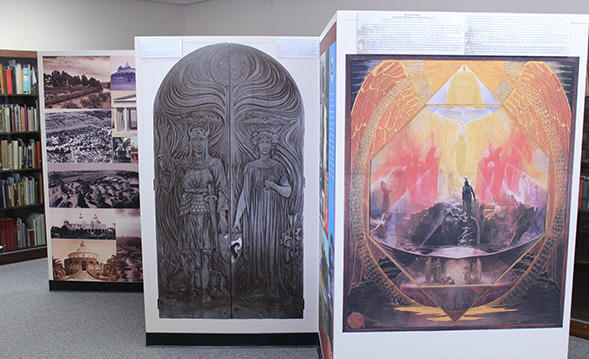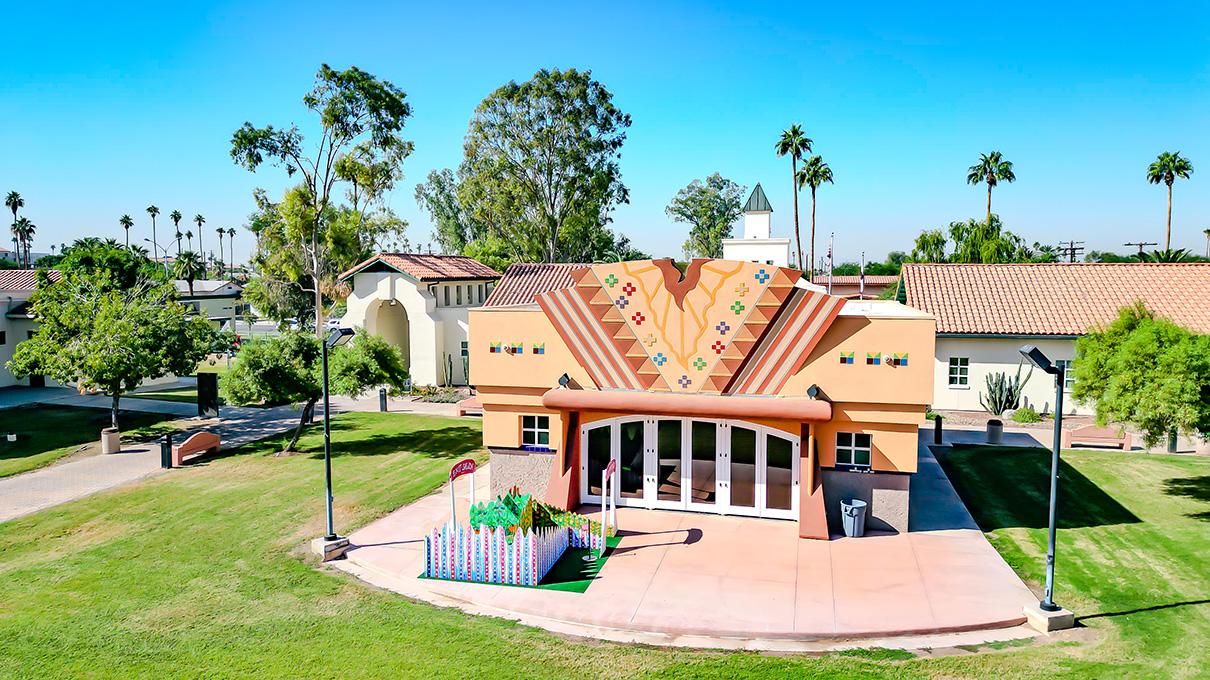Lomaland Exhibit Features Artifacts from San Diegos Forgotten Past
A gift from Kenneth Small enhances the treasure trove in SDSU Special Collections.

“Revisiting Visionary Utopia: Katherine Tingley’s Lomaland - Theosophy in Contemplative Community, Education and the Arts” features photographs, art and artifacts from the Theosophical community that made its home—Lomaland—in Point Loma for four decades beginning in 1898.
The exhibit includes materials gifted to SDSU’s Library and Special Collections from Kenneth Small, whose parents were members of the Lomaland community, plus items on loan to SDSU from the San Diego History Center.
Small is scheduled to present a lecture on Lomaland artists later this year on campus and will be joined by Dwayne Little, professor of history at Point Loma Nazarene University (PLNU). Small said SDSU’s substantial collection of historical material about San Diego was a key factor in the decision to donate his personal collection to the university.
Special Collections director Robert Ray noted that this is the first exhibit to be curated by a university in the United States on the cultural history of Lomaland and its creative arts. The new SDSU collection also adds to the scarce amount of primary source materials on Theosophy that are available at academic institutions.
“This unique convergence offers students, faculty and researchers the opportunity to study a unique cultural phenomenon from San Diego's early history,” Ray said.
First open-air Greek theatre in the U.S.
The Theosophical Society was founded in New York in 1875 by Russian occultist and philosopher Helena Petrovna Blavatsky with American attorneys Henry Steel Olcott and William Q. Judge. They believed in universal fellowship and spiritual emancipation through unity with a divine absolute.
After Blavatsky’s death and a split among several prominent members, Katherine Tingley inherited the leadership of the Theosophical Society in America. She purchased land in San Diego—sight unseen—and built a community that eventually exceeded 500 men, women and children from more than 20 countries.
Described as energetic, inspirational and intuitive, Tingley was raised in a liberal New England family associated with the transcendentalists. She set up soup kitchens and emergency relief missions on New York City’s East Side in the 1890s, and later established philanthropic organizations for orphaned children, unwed mothers, and destitute families.
On Point Loma, Tingley directed construction of the Raja-Yoga School--with its focus on music, art, drama and literature--plus living quarters for the community, a refectory for communal meals, stables, carpentry and machine shops, facilities to produce textiles and a printing press that turned out a steady stream of Theosophical texts. Most famously, she also built the first open-air Greek amphitheatre in the United States, which is still standing.
Notable artists found their creative muse at Lomaland, including Reginald Machell, Maurice Braun, Grace Betts, Edith White and Leonard and Marion Lester. Original work from these artists is on display in the SDSU exhibit.
Orchards and vegetable gardens planted on the slopes of Point Loma produced more than enough for the community, including avocados, which some historians say were first cultivated in California. The site became a tourist attraction with more than 100 visitors arriving each day.
Two major events in 1929 contributed to the decline of Lomaland. Tingley died from injuries suffered in an automobile accident while on a European lecture tour, and the U.S. stock market crash triggered the Great Depression.
Lomaland’s finances were already weakened by Tingley’s overspending. Her successor, Gottfried dePurucker, downsized the community and had stabilized the financial base when World War II erupted. With further financial strain and proximity to the U.S. government militarization nearby, the Theosophists moved their headquarters to Covina, California in 1942.


